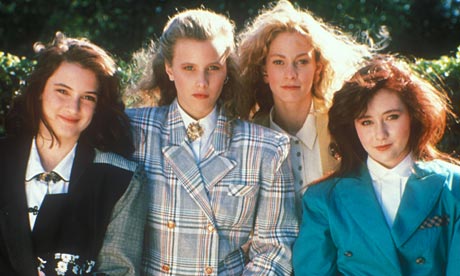Its pertinent to analysis of music videos and slasher films as each feature near-nudity or nudity frequently, with artists such as Madonna, Rihanna and Lady Gaga clearly trading on their bodies and sexual appeal ... BUT claiming (as post-feminists would argue) to be strong women in control and expressing themselves, rather than victims of the male gaze. The slasher movie is often criticised for its wide use of female nudity, though these feminist campaigners are partly making the point that women have long been encouraged to feel ashamed of their bodies - can a seemingly sexist genre really be reclaimed as a positive expression of female liberation?!
The starkly contrasting ways in which traditional feminists and post-feminists (who believe that equality of the sexes has been achieved, so its outmoded to perceive women as victims of a male-dominated culture, or patriarchal society) read media texts is certainly something for you to consider when analysing your own work as well as existing media texts.
NB: the web page contains a topless image, so if you do follow the link take care not to do so in a school setting or around younger siblings. I've copied in the full article below so you needn't do so!
ARTICLE: http://www.guardian.co.uk/world/2012/sep/22/femen-topless-warriors-global-feminism
In a chaotic and crumbling former public washhouse in a rundown district of northern Paris, Inna Shevchenko was explaining how a large leather punchbag hanging from the rafters might be used by the foot soldiers of a new generation of feminists.
As she prepared to welcome recruits to the Ukrainian-based feminist group Femen's first "international training camp", it was clear that the instruction would not be all ideological. The talk was of "war", "soldiers", "terrorism" and "enemies". Was it not curious, one French journalist asked, that Inna and her warriors had adopted the language of combat, traditionally a male domain, to describe their mission?
Was it not also inconsistent, another asked, that the new feminists were using nakedness to rail against female exploitation? In a week that had seen the banning of photographs of a topless Duchess of Cambridge, it was certainly topical.
"Ah, but we have a different idea; we are talking about peaceful war, peaceful terrorism," Inna said. "We are taking off our clothes so people can see that we have no weapons except our bodies. It's a powerful way to fight in a man's world. We live with men's domination and this is the only way to provoke them, the only way to get attention.
"We don't hide our bodies, we don't hide our faces, we confront our enemies face to face. We look them in the eyes and we have to be well prepared physically for that."
There was, she explained patiently, no contradiction in going topless or naked to protest against what they view as the three main evils of a global "patriarchal society": sexual exploitation, dictatorship and religion. Protesting naked, as Femen's slogans insist, is liberté, a reappropriation of their own bodies as opposed to pornography or snatched photographs which are exploitation.
On a less intellectual level, taking their clothes off ensures a lot of publicity.
